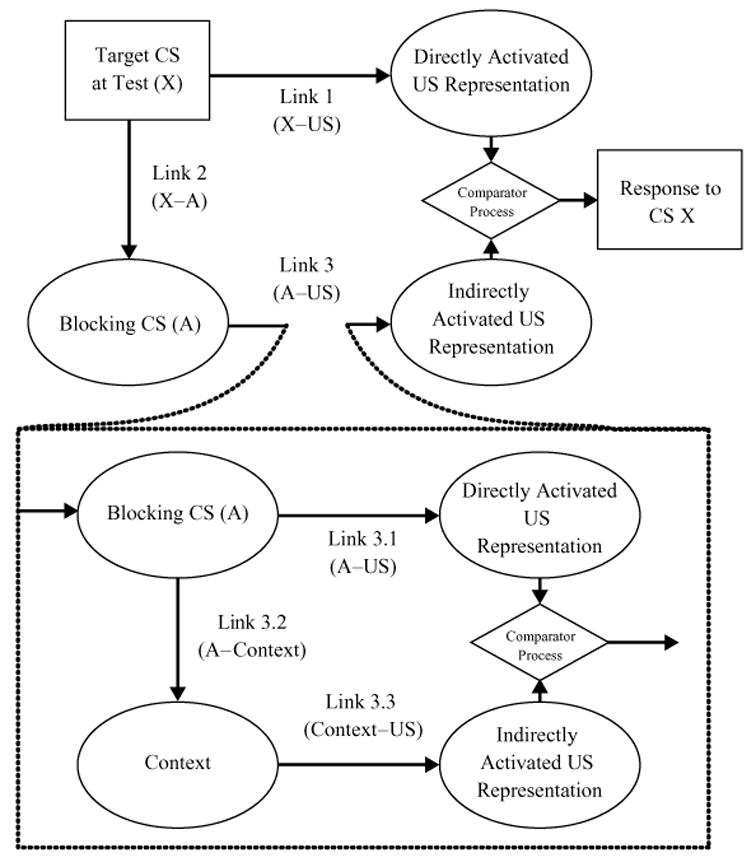Figure 2.

Extended comparator hypothesis (Denniston, Savastano, & Miller, 2001), applied to extended training of the A–US association following compound training in the present research. The target conditioned stimulus (CS) is X; A is the effective first-order comparator stimulus, and the context is the effective second-order comparator stimulus for Link 3. The higher order comparator effect on Link 2 is omitted because it is negligible in this situation.
